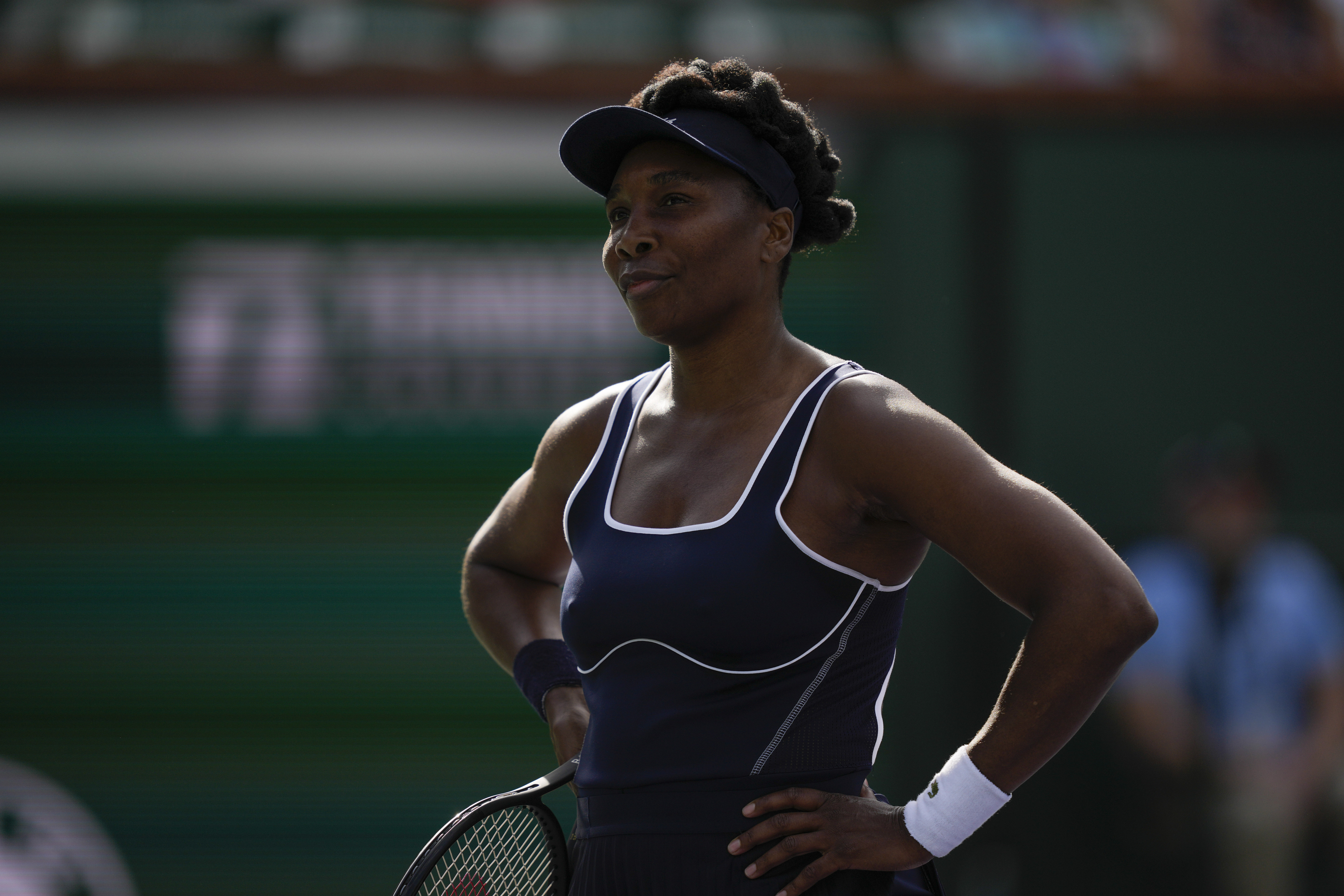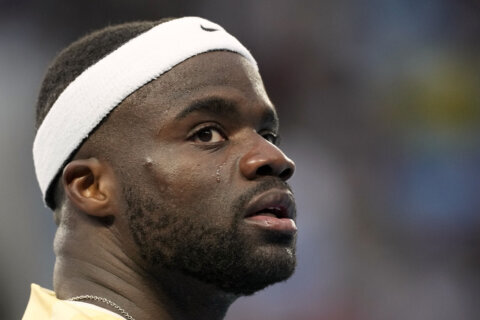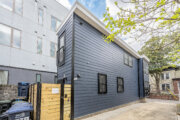COLLEGE PARK, Md. — If you don’t know Frances Tiafoe’s story yet, you’ve got some catching up to do.
Since grabbing the tennis world’s attention by winning the prestigious Orange Bowl at age 15, the youngest ever to do so, he’s been labeled America’s next great tennis hope. But while his steady, measured rise over the past four years has landed him on the doorstep of stardom, his impact on the sport has the chance to reach far beyond simple championships.
Tiafoe’s parents, Alphina and Frances Sr., escaped civil war-torn Sierra Leone in the mid-90s and came to America to try to build a better life. In 1999, the year after Tiafoe and his twin brother Franklin were born, his father began work as a day laborer on what would become the Junior Tennis Champions Center (JTCC) in College Park, Maryland, where his tireless work ethic would later earn him a full-time gig as the custodian, working endless days, sometimes sleeping in a makeshift room on site with the boys while Alphina worked nights.
While the JTCC was built with the purpose of nurturing young tennis players, it’s fair to say those who championed it never expected their most successful prodigy to emerge from that room. Now 19, Tiafoe is the center of gravity as he walks the halls, the reason for every turned head of a camper, or smiling handshake from a staffer or coach. It will always be home, but things have changed.
“I mean, it’s different,” said Tiafoe (pronounced tee-AH-foe). “All the people I used to talk to, when you’re younger, obviously you show respect, but it’s different. You talk to them man-to-man now, you hang out with them outside. Instead of them looking at you as a little kid — well, they’re always going to look at you as a little kid.”
One of those grown-ups is Frank Salazar, one of Tiafoe’s childhood coaches, who still works with him when he’s in town.
“He basically grew up here,” said Salazar. “I’ve known him since he was like four years old.”
But, like everyone else, it took Salazar a bit to realize what he had on his hands. Ultimately, it was Tiafoe’s relentless enthusiasm for tennis itself that set him apart.
“Just the fact that he loved the game, and he was always on the tennis court,” Salazar said. “He would play with anybody who had a pulse. He would play all day, whenever he could.”
He’ll play a little later this day, hitting with Salazar at his side in the stifling Washington summer heat. But for now he’s bouncing from room to room, office to office, looking for a quiet place to chat. He still knows every inch of this building, the one he immersed himself in growing up. At one point, he steps over a spill of red Gatorade in the hallway, which a staffer will later call to his attention, a result of some poor thermos maintenance by one of the young campers. He’s hoping Tiafoe can help him wrest out which one.
“You want to scare some little kids?” the staffer jokes. “You’re big and tough and strong.”
“Yeah …” Tiafoe trailed off tepidly. “I’m too nice, though.”
***
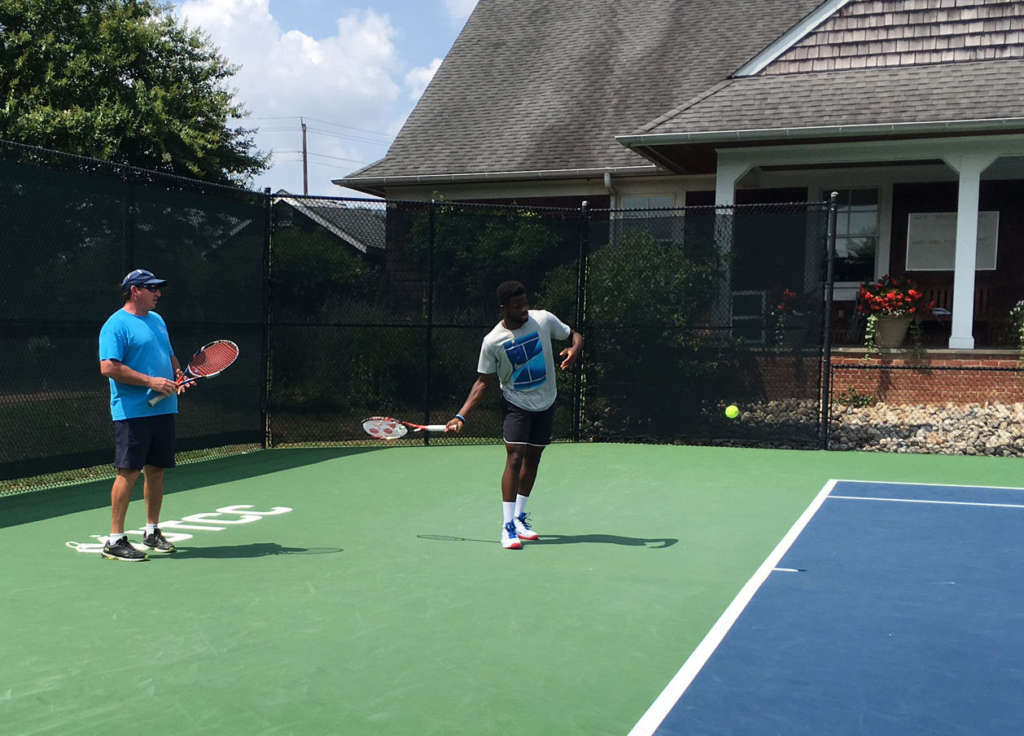
Starting with the 2005 French Open, the Big 4 of Roger Federer, Rafael Nadal, Novak Djokovic and Andy Murray won every grand slam title until the 2014 Australian Open, except for one. During that string of 35 championships, only Argentine Juan Martin del Potro broke through, beating both Federer and Nadal to win the 2009 U.S. Open. Perhaps it’s no surprise, then, that while young players around the world may claim any of the Big 4 as their idol, del Potro was Tiafoe’s favorite.
“He broke out at 19, 20 to win the U.S. Open that year and he’s one of the nicest guys on tour,” said Tiafoe. “I like that he was the first one outside of the Top 4 to win a slam. That was big for me to see.”
It meant the wall of talent at the top wasn’t impossible to see over, for someone like del Potro or, maybe someday, someone like Tiafoe.
It’s been a long time since an American man has seen the top of the tennis world. Andy Roddick was the last American man to hold the No. 1 ranking, his reign ending in February of 2004. He’s the last American man to win a major — the 2003 U.S. Open, when Tiafoe was five years old.
The void is even more glaring considering the success the Williams sisters have had in the women’s game over the same time, combining for 30 of the last 72 grand slam titles. But the game has also changed over that span, with players reaching their primes later.
“Now I think the game has gotten so much more physical, the players have gotten a lot bigger, stronger,” said Salazar. “The equipment has added to the game being faster. So I think it takes a little more time to develop, and that’s why you’re seeing players do a lot better later in their careers, when they’re older.”
That’s why, even as the older generation may recall Michael Chang winning the French Open at the tender age of 17, Tiafoe is the only teenager ranked in the top 100 in the world.
“He’s made a big breakthrough over the last 12 to 18 months,” said Salazar. “I think he’s done a really good job with managing his own expectations, and also he’s done a really good job managing expectations that others have of him.”
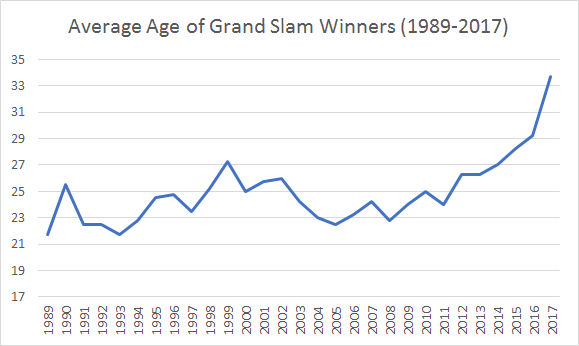
Before the end of 2015 Tiafoe broke into the Top 200, and by early 2017, just after his 19th birthday, he inched into the Top 100 for the first time. After earning his way in through qualifying, Tiafoe won his first-round match at the Australian Open before running into Alexander “Sascha” Zverev, the young German star exactly nine months Tiafoe’s senior, but a step ahead of him so far on tour. Tiafoe fell in straight sets, 6-2 6-3 6-4.
Tiafoe took a set from his hero del Potro in Acapulco in February; he took Roger Federer to a tie break in the first set in Miami in March. He won an ATP Challenger event in Sarasota and backed that up with another Challenger win in a French Open tuneup in Aix-en-Provence before taking Top 30-ranked Fabio Fognini five sets in the first round at Roland-Garros.
But Tiafoe got perhaps his biggest win to date just a couple weeks ago at Wimbledon, knocking off 38th-ranked Robin Hasse 6-3 3-6 7-6 7-5 for his second match win at a grand slam. His reward? Zverev, again — the 20 year-old now knocking on the door of the Top 10 — and another straight set defeat.
“It’s kind of a mental thing right now between me and him — for me, not for him,” Tiafoe said, laughing. “We grew up together, and you’re trying to make a statement that he’s not any superior from all the other guys you grew up with. He was the first one to make the crack.”
Nevertheless, Tiafoe recognizes the leap Zverev’s made — he beat Djokovic in straight sets to win the ATP title in Rome this year, after all — and sees both what he’s aspiring to and what he’s up against as he progresses up the rankings.
“I didn’t think I played my best that day, by any means,” Tiafoe said. “But I mean, he’s 12th in the world right now, he’s playing really well. So I would have to bring my best stuff to have a chance, and that’s not even a guarantee, even if I brought my best.”
That’s where the patience comes in. Being the young guy on tour may earn you interviews and accolades and knowing promises from sportscasters into the camera to the viewers at home that you’re going to be on top someday. But right now, it means losing, in spades.
“He’s going to lose a lot more than he’s going to win right now,” said Salazar. “So if he has the stomach to lose, and to travel, and to enjoy it, and then keep getting better, I think he’s going to have a very bright future.”
To that point, Tiafoe is just 3-9 overall this year in ATP events. But he’s won twice at majors, even if he hasn’t gotten past the round of 64. Even Pete Sampras hadn’t advanced past a quarterfinal of a major before his breakthrough US Open at 19, the same age Tiafoe is now.
***
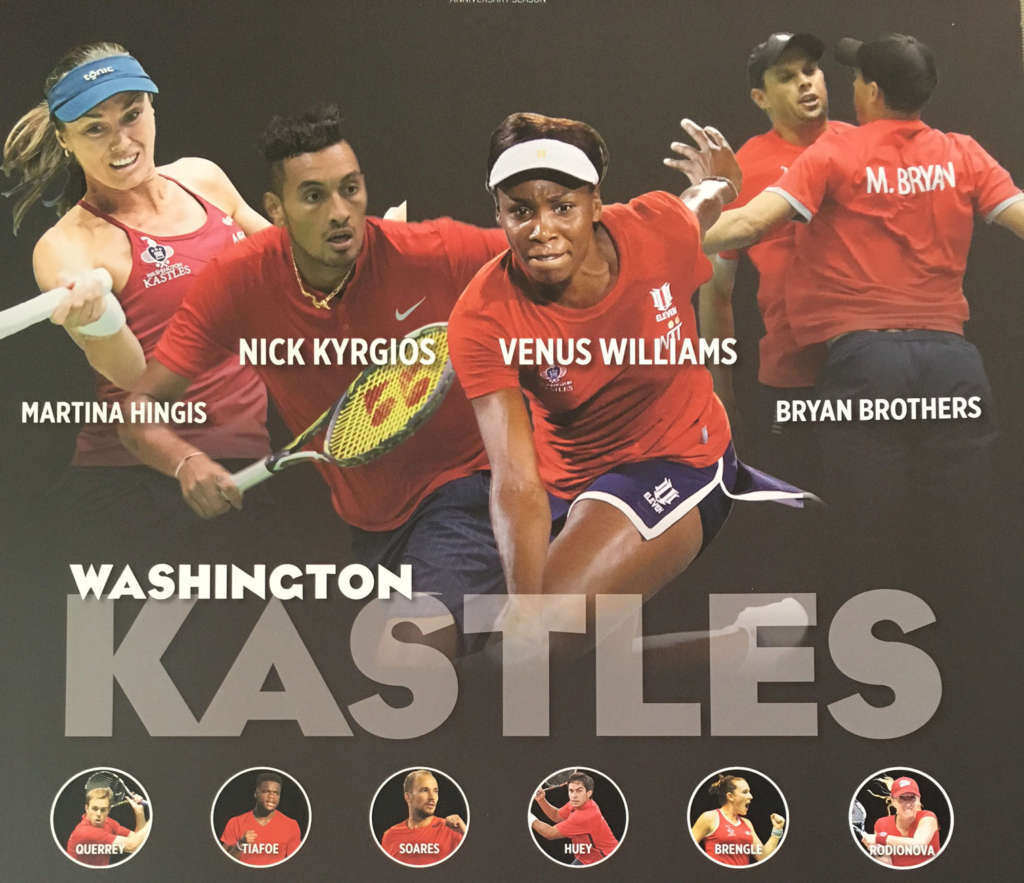
Whether Tiafoe’s next big leap comes immediately or takes a little more time, each step further he takes exposes more people to his incredible story.
While of course he wants to be No. 1, to be the best, there’s success in the process itself, in the grind of life on the tour, of watching the number next to your name get smaller and smaller as the count of challengers above you continues to shrink. The success, every time another big name goes down, of another person asking the question: Who is Frances Tiafoe?
“That’s one of the hopes for the Frances’s of the world, that people see him and that he came from such an incredibly modest background, and see you don’t have to come from privilege to be successful in this sport,” said Washington Kastles owner Mark Ein.
There have been plenty of examples of Eastern European players finding similarly unlikely paths to success in tennis, and certainly the Williams’ sisters provided an inspirational stateside model of African-Americans succeeding in a predominantly white sport. But Tiafoe’s in a unique place as a potential ambassador for the game.
“The public perception may not have fully caught up to the reality, and having people like Frances at the top of the sport and able to tell their stories is a wonderful thing for the game,” Ein said.
Before he tackles the final grand slam event of his teens in Flushing later this summer, Tiafoe is coming home. He’s practicing at the JTCC, on his home courts, with Salazar, before joining the Kastles for a string of matches this week. It’s the closest thing he’ll have to a home game amid a life of constant international travel.
“I’ve been going to the Washington Kastles since I was young, so I’ve always really wanted to play,” he said. “I think it’s really cool, just something different. Week in, week out (on tour), we’re just doing the same thing … It’s just good to be a part of a team and competing in front of your hometown fans.”
If the fan response is anything like the media’s, it will be raucous at Smith Center this week. Everyone in Washington wants a piece of Tiafoe these days. According to Ein, the only time the team’s fielded more media requests for a player heading into a season was when Serena Williams played for the team at the height of her career.
“Yeah, it’s been interesting — home’s been a lot,” Tiafoe said. “It’s been fun, though. I like that everyone’s been real supportive, and obviously everyone’s really happy to see me, which is good … I feel, when I’m home, obviously everyone’s talking about tennis, but when I’m with my friends, I just feel like nothing’s changed, like we’re boys from back in the day.”
For Ein, having Tiafoe on the roster is a fantasy come full circle.
“It means everything to us,” Ein said. “I think every owner of every sports team, their dream is to have a great player who grew up in the community come back and play for the team. And I think, at some level, for many of the players, that’s their dream, too.”
Tiafoe’s dream doesn’t end there, though. It’s just the latest stop on the slow and steady train forward, the one everyone’s turning to watch. The one some young boy or girl, maybe this week, maybe years from now, will look at to forge their own way, following the tracks he’s laying today.

